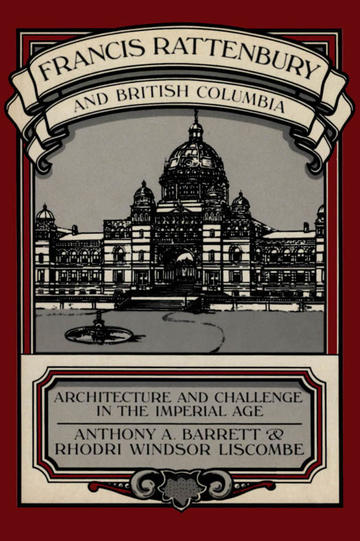About BC Books Online
BC Books Online was created for anyone interested in BC-published books, and with librarians especially in mind. We'd like to make it easy for library staff to learn about books from BC publishers - both new releases and backlist titles - so you can inform your patrons and keep your collections up to date.
Our site features print books and ebooks - both new releases and backlist titles - all of which are available to order through regular trade channels. Browse our subject categories to find books of interest or create and export lists by category to cross-reference with your library's current collection.
A quick tip: When reviewing the "Browse by Category" listings, please note that these are based on standardized BISAC Subject Codes supplied by the books' publishers. You will find additional selections, grouped by theme or region, in our "BC Reading Lists."
Yorkshire-born Francis Mawson Rattenbury (1867-1935) emigrated to British Columbia as a young architect in 1892. Within months of his arrival in Victoria he launched his brilliant, if abbreviated, career by winning an international competition to design the legislative buildings. While his life was marred by controversy, scandal and, in the end, tragedy, Rattenbury's architecture had an enduring impact on the Canadian landscape and his commercial ventures were important to the economic development of the West.
Richly illustrated with over 200 drawings and photographs, Francis Rattenbury and British Columbia is the first major critical study of a Canadian architect in the context of his times. Using unpublished primary sources, including his recently discovered private letters, the authors document Rattenbury's professional career and the evolution of his architectural style. Detailed descriptions are given of some of his most famous projects, notably the legislative buildings and the Empress Hotel in Victoria. Besides working on a number of government commissions, Rattenbury became chief architect for the Canadian Pacific Railway and designed "chateau-like" buildings for C.P.R. hotels in the Rockies, Vancouver, and Victoria.
Other projects such as the Vancouver and Nanaimo Courthouses and Bank of Montreal branches set the pattern for institutional architecture in British Columbia. His buildings not only drew attention to the growing importance of the province, but also lent dignity and character to its major centres.
Filled with the vigour and confidence of the imperial age, Rattenbury initiated a number of commercial ventures. These included the founding of a transportation system to the Yukon goldfields and extensive land speculations. As the authors point out, these investments were perhaps not undertaken solely for monetary gain but reflected Rattenbury's firm belief in the future of British Columbia and his desire to play an active role in its growth. Unfortunately, his entrepreneurial adventures involved heavy financial losses, among which were ruinous lawsuits involving the provincial government.
This pioneering work on Western Canadian architecture will serve as a valuable design source for both the specialist and lay reader. It also includes an important account of the part played by major Canadian companies and government patronage in the development of British Columbia. This professional biography reveals new facets of Rattenbury's life and character which have been the subject of both public and literary controversy.
Anthony A. Barrett is an associate professor in the Classics department at the University of British Columbia. Rhodri Windsor Liscombe is an associate professor in the Fine Arts department at the University of British Columbia.
Out of print
This edition is not currently available in bookstores. Check your local library or search for used copies at Abebooks.



